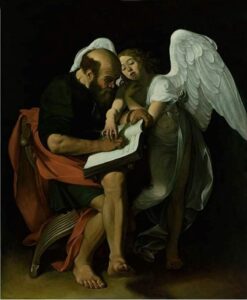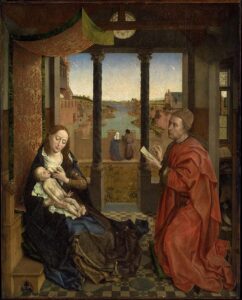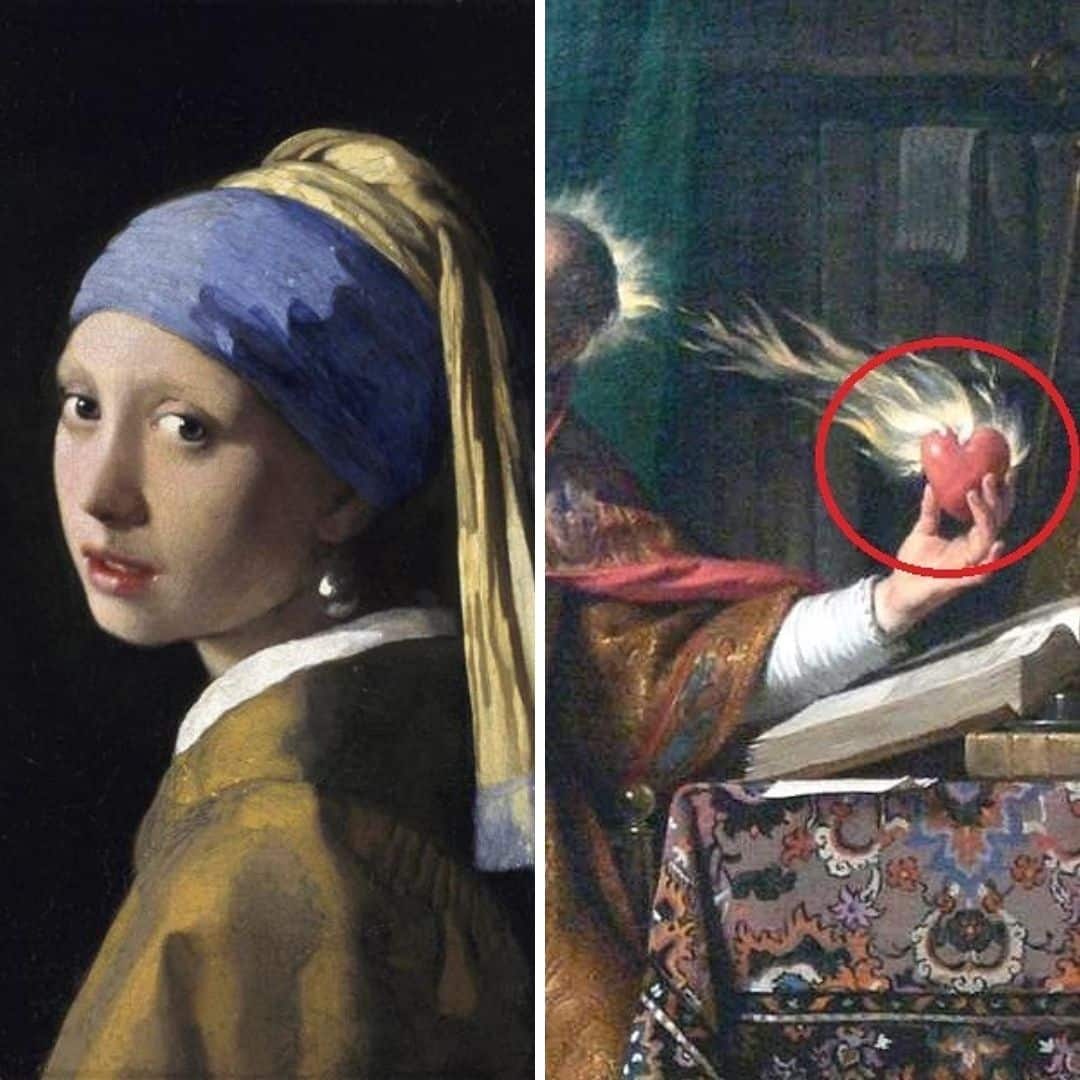The Tetramorph (or tetramorphos) is one of the representations of the Four Evangelists.
These have a particularly rich iconography, due to their participation in the production of the Bible.
So, over time, they can be represented as individuals or as a group, in a very interesting format.
The tetramorph | The representation of the four evangelists
Author: Yolanda Silva.
Contains an explanatory video.
Do you want to learn more about iconography and symbols in art? Online course Iconography of the Saints.
Let’s take a look at the following image.

Tapestry of Pieter van Aelst (16th century) – God with the four Apostles (Tetramorphos) (at the National Museum of decorative arts, Madrid-Spain).
The Tetramorph or Tetramorphos
We can identify, firstly, God in the First Person (centered), distinguished by his triangular nimbus (symbolical of the Holy Trinity).
He is surrounded by three animals and, facing him, an Angel.
Knowing the Gospel, we can realize that God is in fact surrounded by the Four Evangelists.
These often appear represented not only as the men they were, bearing certain objects as their attributes.
But also as animals (and an Angel, in the case of St. Matthew), symbolism related directly to the Gospels of Christ.
This form of representation is called tetramorph (from Greek tetra: four, and morpho: shape).
It will replace the traditional image of these Apostles, stressing their importance in spreading the Word of God through the Gospels.

Pantocrator tetramorph
As we can see in the former two images, the Tetramorphos consists of an Angel, a Lion, a Bull and an Eagle.
These representations are directly linked to the corresponding Gospel of each Apostle.
The Four Evangelists
The Angel (or a Man) represents St. Matthew, who defended the humanity of Christ through his testimony.
St. ![]() Matthew symbolizes the Birth and must be placed to the right of Christ/God.
Matthew symbolizes the Birth and must be placed to the right of Christ/God.
The Lion represents St. Marc, because his Gospel begins with the prediction of John the Baptist («the voice that cried from the desert»).
It symbolizes the Resurrection and is also placed at the right hand of Christ.
The Bull represents St. Luke, who speaks of the sacrifice of Zechariah, father of John the Baptist (the animal chosen for the sacrifices was, generally, the bull).
Furthermore, St. Luke speaks extensively about the sacrifice of Jesus on the cross, thus symbolizing the Passion of Christ.
He is located to the left of Christ.
The Eagle represents St. John, which begins his Gospel in the sky, focusing on the spiritual.
Also, according to the bestiary, the Eagle is the only animal that can face the Sun, which in this case is symbolic of the Divine Person.
The Eagle is represented on the left, above the Bull.
In addition to the Tetramorphos, these Apostles can be presented simply sitting or writing their Gospels, alongside with their symbolic animal.
Sometimes, an Angel seems to whisper in St. Matthew’s ear.

Saint Matthew and the Angel Caravaggio
St. Marc may also be represented through episodes narrated in the Golden Legend, as the transfer of his body to Venice or the episode of the Miracle of the Slave.
St. Luke as a painter, metaphorically alluding to the fact that it was he who best portrayed the Virgin Mary in his writings.

Saint Luke Drawing the Virgin, Boston Museum of Fine Arts, Rogier van der Weyden, c. 1435


